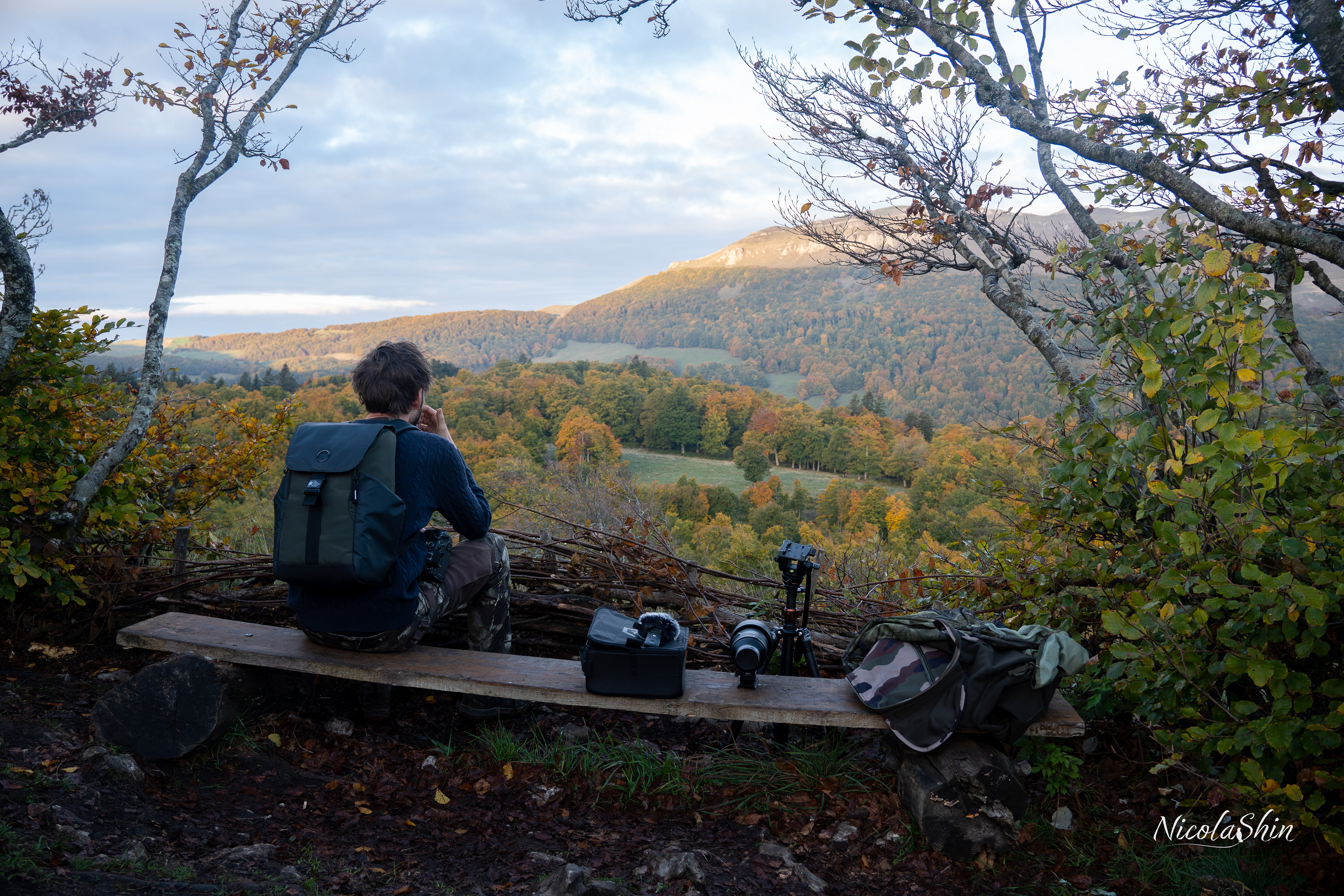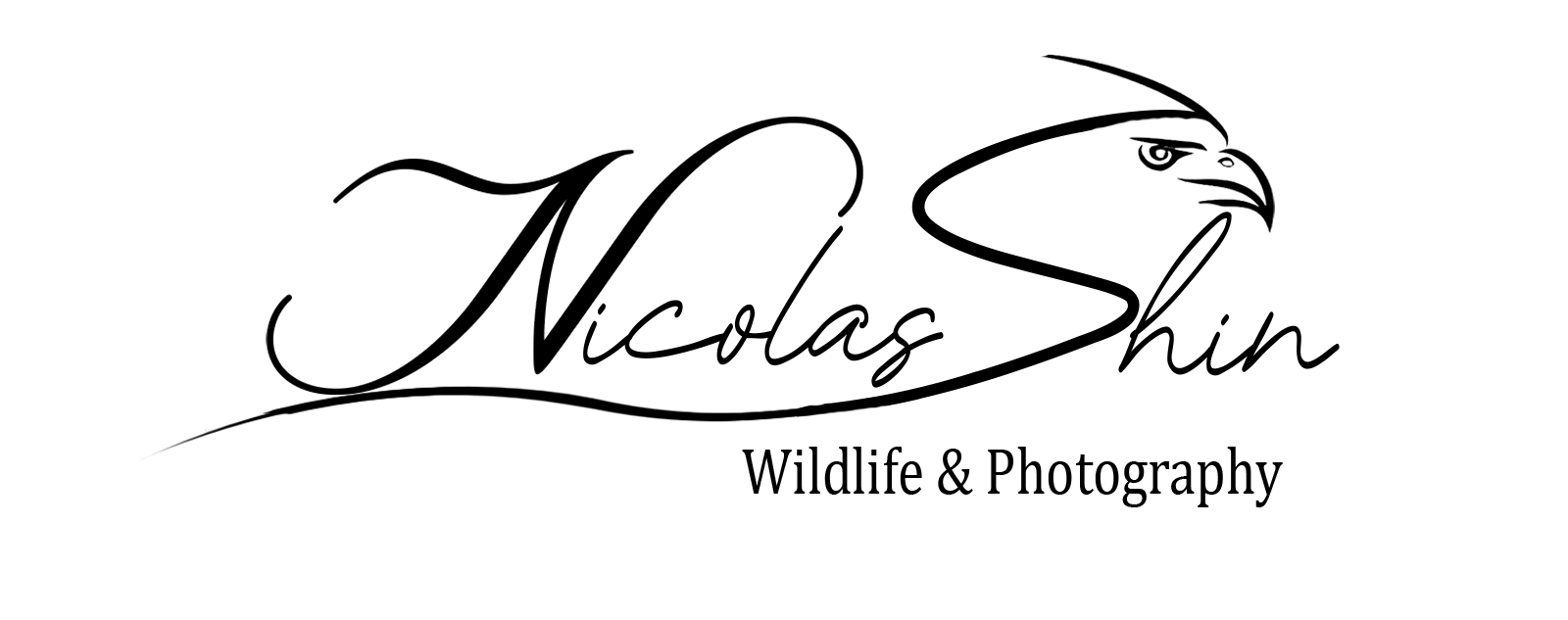September 2022: Mid-September to mid-October is the rut period of the red deer, a season famous for the stag's bellowing. My friend Loic and I decided to witness it in the Vercors region of France, between Valence and Grenoble.
The plateau d'Ambel is a well-known location among photographers and wildlife enthusiasts, as hunting is forbidden there all year round. At the end of summer, deer start gathering on the plateau, and it is estimated that around 30 dominant males and 300 deer spend the rut season there before returning to the valleys.
The male deer, or stag, typically weighs between 160 and 240 kg, while the female, or hind, is usually smaller, weighing between 120 and 170 kg. The red deer is the largest deer species in western Europe. Only the stags have antlers, which fall off in the winter after the mating season. While they grow back in the spring, they are covered in velvet (vascularized skin) and can grow up to 2.5 cm per day. In the autumn, the velvet sheds, and the antlers stop growing. With each passing year, the antlers tend to grow larger.
After a short night and a light breakfast, we decided to go for a hike to explore the plateau. After a few minutes, we started to hear stags bellowing. The males roar to attract females and warn off rivals. During the rut, males compete to gather groups of hinds called harems. The largest harem we saw had around 15 hinds, but they can contain up to 20 females. The smallest harem we observed was made up of two deer and was led by a young stag.After an hour of hiking, following the roars, we finally spotted a harem on a ridge near the edge of the forest. We spent two hours watching from a distance as the stag tried to keep the females close to him. Some of the more adventurous and curious deer approached us quite closely, wondering what we were doing there, before returning to the harem.
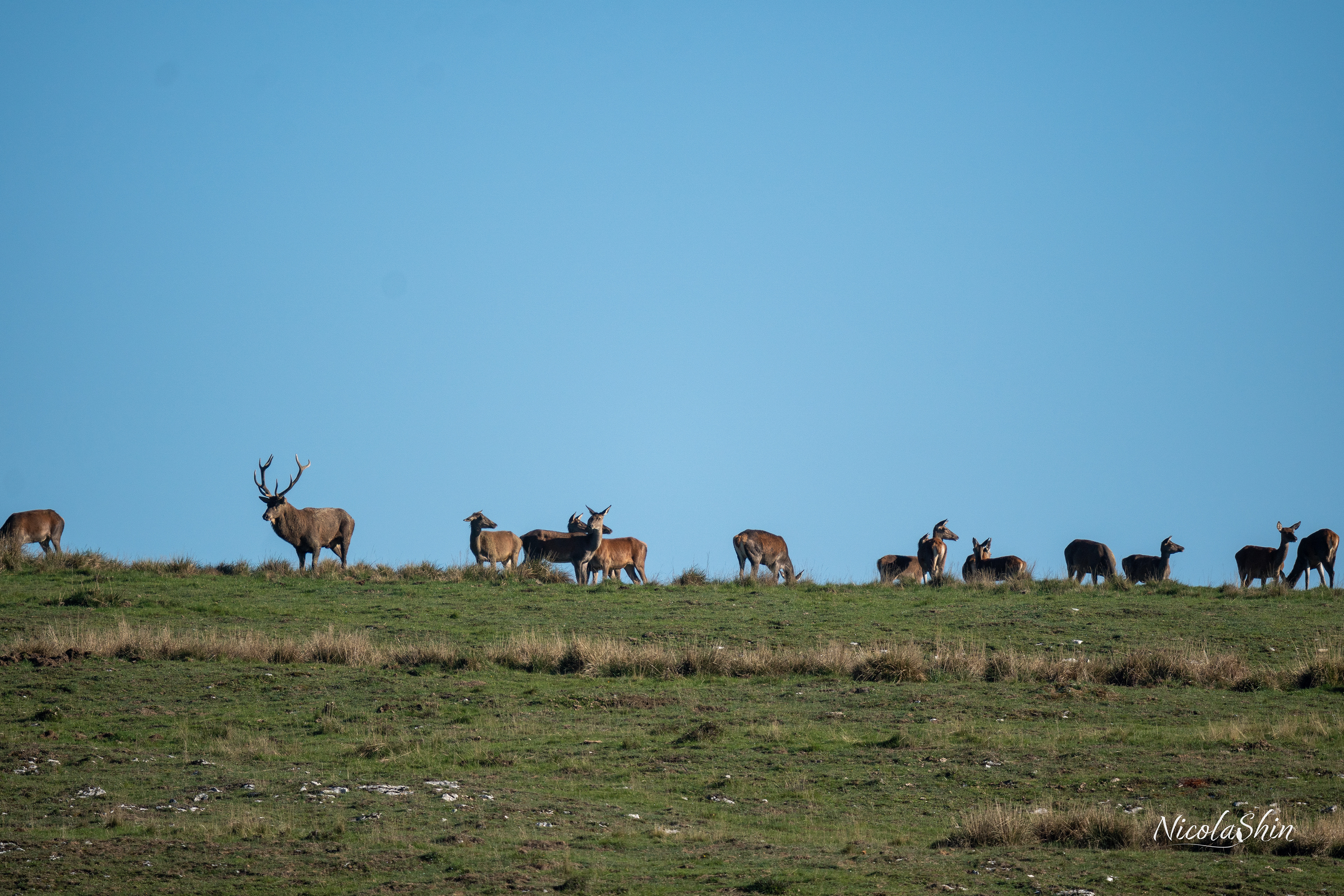
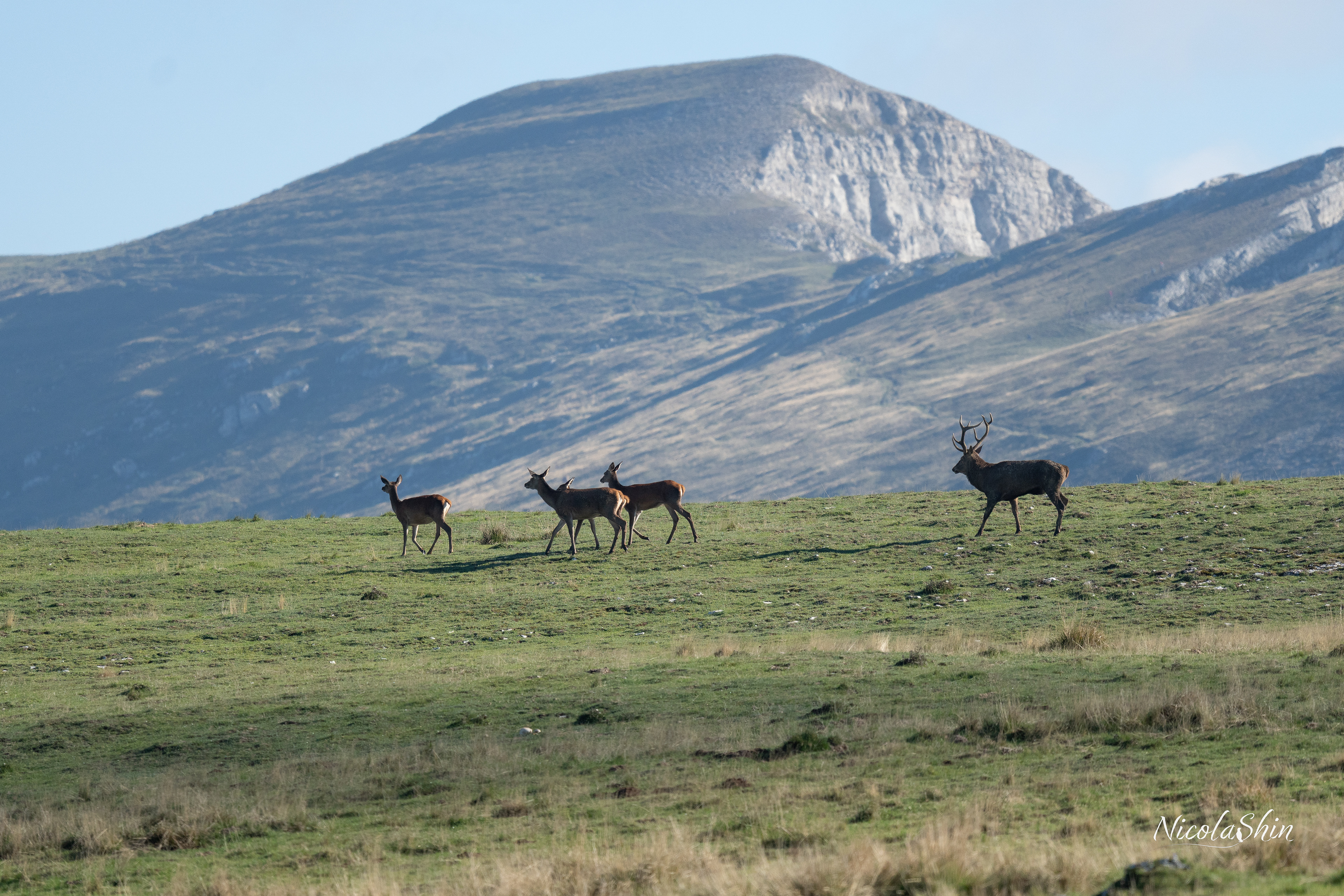


Lying in the meadow a few meters away from these majestic animals was an incredible experience. The stag stared at me for a while, trying to decide if I posed a threat or not. I felt a sense of calm and peacefulness wash over me. I felt privileged to be so close to these animals in such a beautiful environment, with the wind singing through the trees, the birds and the rutting of the deer as the only sounds breaking the silence of the mountains.
The diversity of landscapes and wildlife in the Vercors makes it a great destination for nature lovers and hikers. Although we didn't see a wolf during our trip, we did find the carcass of a deer that had recently been killed, likely by a wolf. To see a wolf, you probably need to know the mountain better than we do and be a bit lucky, but knowing they were wandering the same prairies as us was exciting.
The golden eagle (aigle royal) is very much present in the Vercors, we saw at least one every day albeit quite far to take nice photos. The Alpine chough (Chocard à bec jaune) and the chamois were much easier to approach.
The golden eagle (aigle royal) is very much present in the Vercors, we saw at least one every day albeit quite far to take nice photos. The Alpine chough (Chocard à bec jaune) and the chamois were much easier to approach.

Alpine Chough in the fog
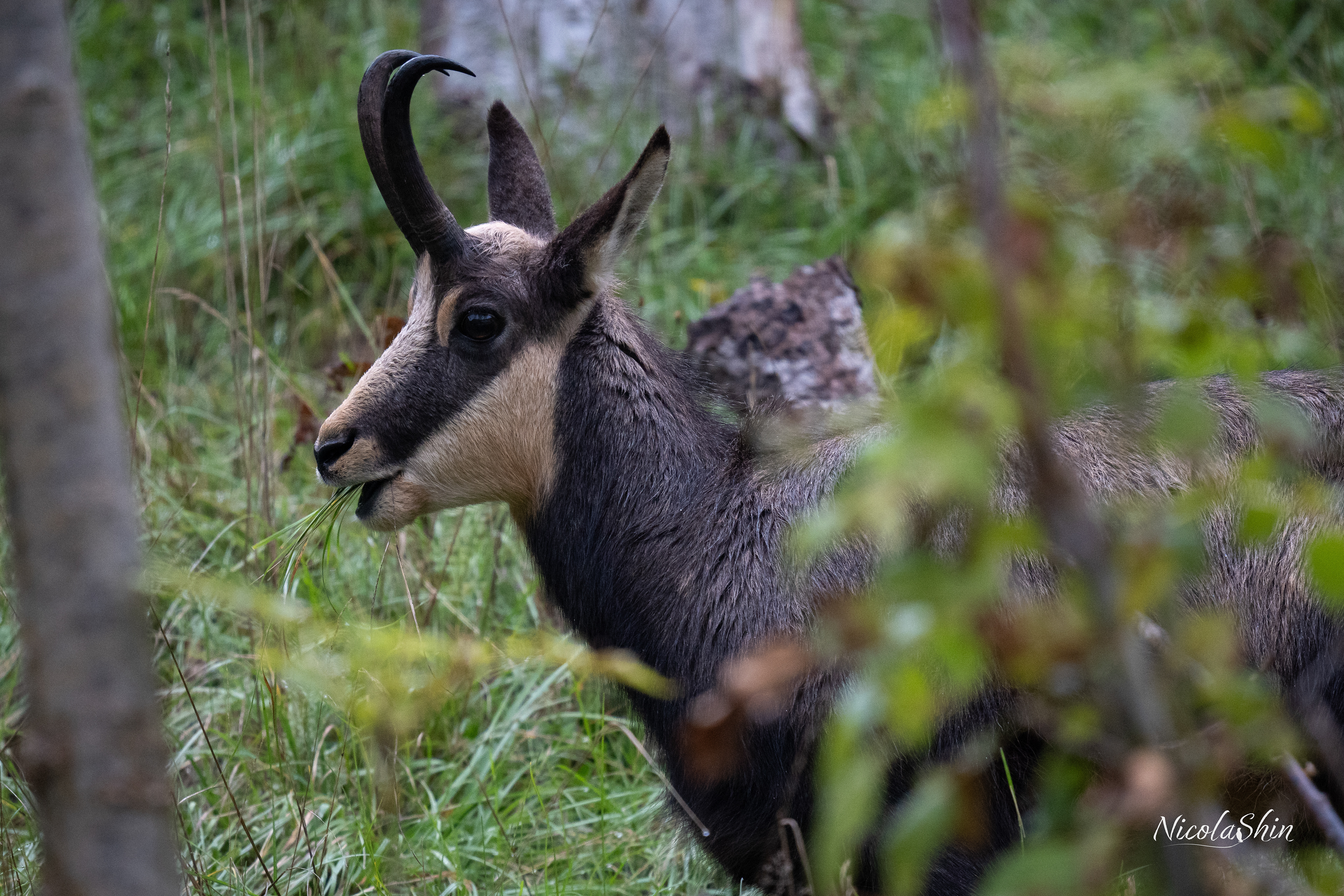
Chamois
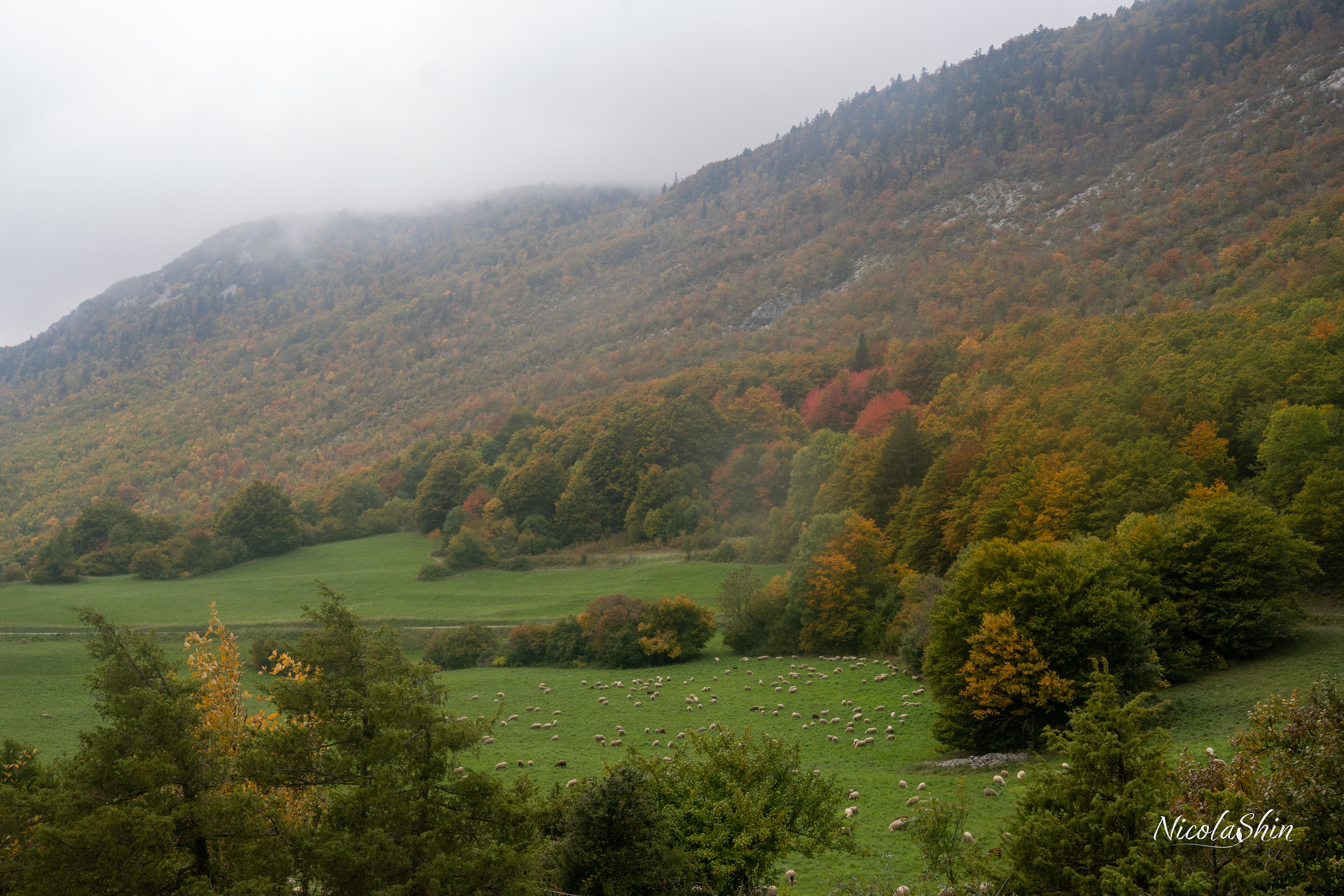
Foggy landscape




Where to shoot: Le plateau d'Ambel is a great place to start for wildlife photography. The region has organized hides that are easily accessible (15-20 minute walk from a parking lot) and that preserve the environment for the animals. You won't be alone, but it wasn't overcrowded either when we were there. You can follow the instructions there to get to one the two hides.
If you're looking for longer hikes, you have a lot of options near le plateau d'Ambel. We saw chamois and deer while hiking Le Roc de Toulau, which can be steep but has a stunning view and no one was there.
If you're looking for longer hikes, you have a lot of options near le plateau d'Ambel. We saw chamois and deer while hiking Le Roc de Toulau, which can be steep but has a stunning view and no one was there.
Where to stay: We stayed at Hostel Quartier Libre, 20 minutes away from the plateau d'Ambel by car. The view over the Cirque de Combe Laval is exceptional (an eagle couple is known to nest there). They rent rooms and small apartments, and we stayed in one of their apartments and had a wonderful stay. The owners are fantastic young entrepreneurs and run the place by themselves. The food is great too, and it is worth stopping by.


